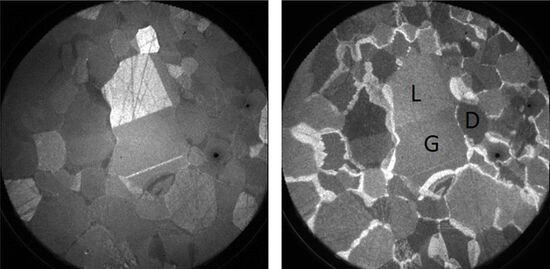Atomic structure of different surface terminations of polycrystalline ZnPd
- 18
- Oct
- 2024
M. Lowe, A. Al-Mahboob, D. Ivarsson, M. Armbrüster, J. Ardini, G. Held, F. Maccherozzi, A. Bayer, V. Fournée, J. Ledieu, J. T. Sadowski, R. McGrath, and H. R. Sharma
The intermetallic compound ZnPd has been found to have desirable characteristics as a catalyst for the steam reforming of methanol. The understanding of the surface structure of ZnPd is important to optimize its catalytic behavior. However, due to the lack of bulk single-crystal samples and the complexity of characterizing surface properties in the available polycrystalline samples using common experimental techniques, all previous surface science studies of this compound have been performed on surface alloy samples formed through thin-film deposition. In this study, we present findings on the chemical and atomic structure of the surfaces of bulk polycrystalline ZnPd studied by a variety of complementary experimental techniques, including scanning tunneling microscopy (STM), x-ray photoelectron spectroscopy (XPS), low energy electron microscopy (LEEM), photoemission electron microscopy (PEEM), and microspot low-energy electron diffraction (μ-LEED). These experimental techniques, combined with density functional theory (DFT)-based thermodynamic calculations of surface free energy and detachment kinetics at the step edges, confirm that surfaces terminated by atomic layers composed of both Zn and Pd atoms are more stable than those terminated by only Zn or Pd layers. DFT calculations also demonstrate that the primary contribution to the tunneling current arises from Pd atoms, in agreement with the STM results. The formation of intermetallics at surfaces may contribute to the superior catalyst properties of ZnPd over Zn or Pd elemental counterparts.
PHYSICAL REVIEW MATERIALS 8, 105801 (2024)
DOI: 10.1103/PhysRevMaterials.8.105801
